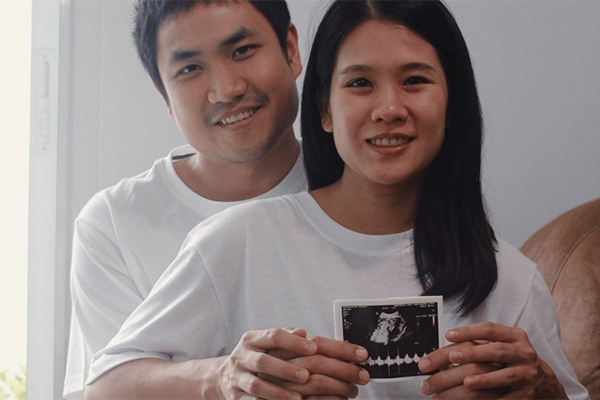Topics
Vaginal dryness is a common issue that affects many women, particularly during menopause. The lack of natural vaginal lubrication can result in discomfort, irritation, and pain around the genital area.
Unfortunately, vaginal dryness is not a topic that one discusses freely. This article is intended to serve as a comprehensive guide to the causes and available treatments for vaginal dryness.
What Is Vaginal Dryness?
Vaginal dryness refers to a condition where the vagina lacks sufficient moisture and lubrication. This can result from a decrease in oestrogen levels, leading to symptoms such as discomfort, irritation, and pain during sexual activity. Oestrogen plays a key role in maintaining the health and lubrication of the vaginal tissues, and when its levels decline, it can cause dryness and other related issues.
Is Vaginal Dryness Common?
Vaginal dryness is a relatively common issue, particularly among women who are going through menopause. It is estimated that a significant percentage of postmenopausal women experience symptoms of vaginal dryness.
However, it can also affect women of any age for various reasons, such as hormonal changes, breastfeeding and stress.
What Are the Symptoms of Vaginal Dryness?
Although the symptoms of vaginal dryness can differ from one woman to another, they usually manifest as a combination of the following symptoms:
- Persistent vaginal itching.
- Burning sensations in the vaginal area.
- Pain or discomfort during sexual intercourse.
- Urinary symptoms such as increased frequency or urgency.
- Recurrent urinary tract infections (UTIs).
What Are the Causes of Vaginal Dryness?
Vaginal dryness can result from various factors, and it is often associated with a decrease in oestrogen levels. Here are some common causes:
- Menopause: Vaginal dryness during menopause is associated with a reduction in oestrogen levels. As oestrogen levels drop, the vaginal tissues become dry due to insufficient lubrication.
- Hormonal changes: Apart from menopause, other hormonal changes, such as those during pregnancy, breastfeeding, or certain phases of the menstrual cycle, can contribute to temporary vaginal dryness.
- Cancer treatments: Surgical removal of ovaries and radiotherapy or chemotherapy of the pelvis for cancer treatment can lead to a decrease in oestrogen levels, resulting in vaginal dryness.
- Medications: Medications like danazol, medroxyprogesterone, leuprolide, or nafarelin affects oestrogen production, resulting in vaginal dryness.
- Allergies or irritants: The use of certain soaps, detergents, or hygiene products with harsh chemicals can irritate the vaginal area and contribute to dryness.
- Emotional factors: Stress, anxiety, and emotional factors can affect sexual health and may contribute to vaginal dryness. Psychological well-being is linked to sexual function, and stress can impact hormone levels.
What Are the Treatment Options for Vaginal Dryness?
If you are experiencing vaginal dryness, the following are some treatment options that may help:
-
Vaginal moisturisers
- Vaginal moisturisers are formulated to hydrate vaginal tissues. Therefore, they are different from lubricants, which are mainly used during sexual intercourse.
- Moisturisers are available over-the-counter and should be used regularly to prevent vaginal dryness. Whether you choose creams or gels, it is vital that the product is pH-balanced and irritant-free and fragrance-free to avoid potential reactions.
-
Vaginal lubricants
- Vaginal lubricants are products used during sexual activity to reduce friction during sex.
- They come in various types - water-based, oil-based, and silicone-based.
- However, water-based lubricants are usually recommended because of their non-irritating properties.
-
Low-dose oestrogen therapy
- This therapy is prescribed for more effective treatment, especially if lubricants and moisturisers are not sufficient.
- Available as creams, tablets, or rings; cream is applied daily initially and then less frequently, while the ring is worn continuously.
- Low-dose vaginal oestrogen poses lower systemic risks compared to other oestrogen-containing products.
- Progestin medication may be necessary depending on the specific vaginal oestrogen used.
-
Dehydroepiandrosterone (DHEA)
- Administered as a daily suppository inserted into the vagina, prasterone converts into oestrogen and testosterone locally.
- Although vaginal oestrogen therapy is more prevalent due to extensive research and a more convenient dosing schedule, prasterone serves as an option for those unable to use oestrogen or choosing to avoid it while still considering other vaginal hormone treatments.
-
Ospemifene
- Prescription medication with oestrogen-like effects is available in pill form.
- Alternative for those who prefer non-vaginal options but may cause mild side effects.
Make an Appointment at Pantai Hospitals
If you are experiencing the discomfort due to vaginal dryness, take action now to enhance your well-being and regain intimacy. Explore available over-the-counter lubricants and moisturisers for immediate relief.
If symptoms persist, consult with your doctor to discuss personalised treatment options. Don't let vaginal dryness impact your quality of life – seek the right solution tailored to your needs and embrace a more comfortable and fulfilling lifestyle.
Get in touch with us to book an appointment with our team of gynaecologists today, or find out more about our Obstetrics and Gynaecology Services at your nearest Pantai Hospital.
Pantai Hospitals have been accredited by the Malaysian Society for Quality in Health (MSQH) for its commitment to patient safety and service quality.












